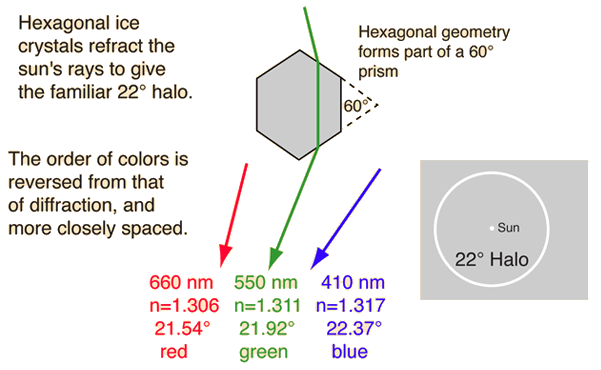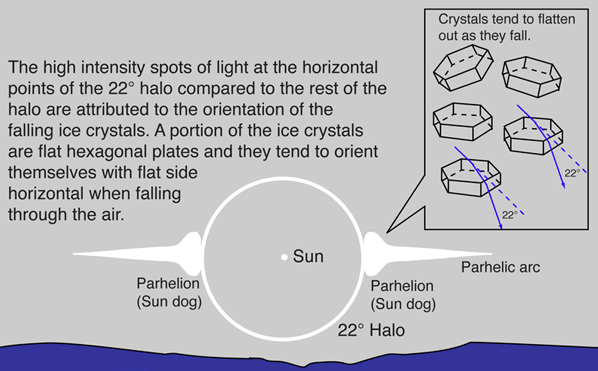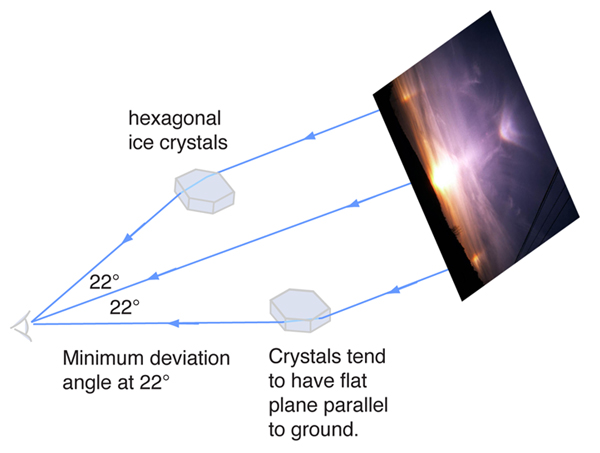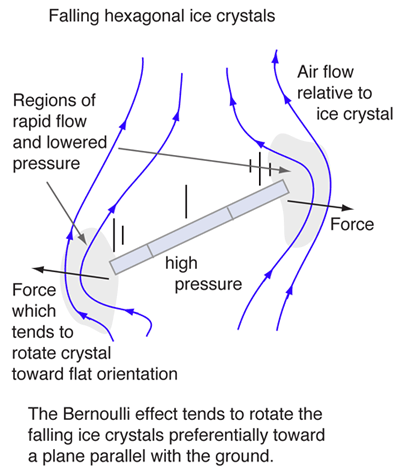The 22° Halo
The familiar 22° halo around the Sun or Moon occurs because of refraction in tiny hexagonal ice crystals in the air. With the 60° apex angle of the prism formed by extending the sides of the crystal and the index of refraction of ice (n=1.31) one can calculate the angle of minium deviation to be 21.84°.
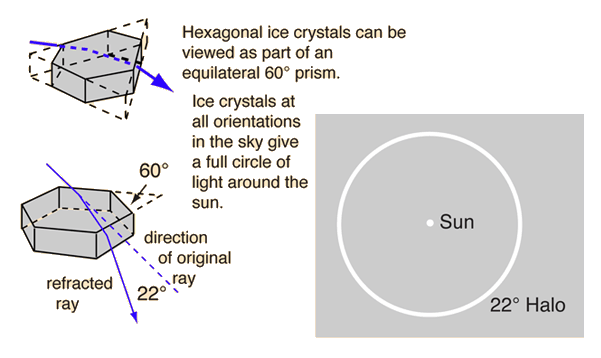
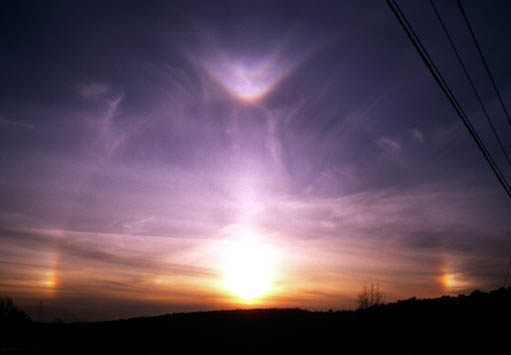
Photo by Clay S. Turner. Used by permission.
Further refinement using n=1.306 for red and n=1.317 for blue gives angles of 21.54° and 22.37° for red and blue respectively. The inner edge of the halo is sharp and appears reddened - the angle of minimum deviation for red is less and you see it from crystals closer to the Sun or Moon direction. The out edge of the halo is blue in appearance but less saturated because other wavelengths can refract at that angle.
| Calculation | Can you have diffraction at this angle? |
| Can you see a 22° halo from the equator? |
| Origin of "sundogs" | Other halo phenomena |
| Moon halo |
Halo formation
Atmospheric optics concepts
References
Greenler
Schaaf
| HyperPhysics***** Light and Vision | R Nave |
